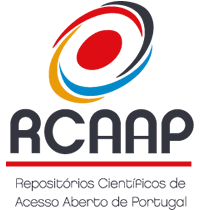From In to Out: assessing antimicrobial-resistant Escherichia coli across treatment stages of wastewater
DOI:
https://doi.org/10.48797/sl.2025.339Keywords:
PosterAbstract
Background: Wastewater treatment plants (WWTPs) are critical points for the selection and transmission of antimicrobial resistance (AMR), which has become a major global public health concern [1,2]. The One Health approach is essential in addressing this issue, as AMR affects both human and environmental health [3]. Objective: To evaluate the role of WWTPs as reservoirs and/or sources of antimicrobial-resistant Escherichia coli, a key indicator of fecal contamination. Methods: Samples were collected from a WWTP located in northern Portugal, designed primarily for domestic sewage treatment. The sampling covered various stages of the treatment process: influent (untreated water), effluent (treated water), biological sludge, and dehydrated sludge, across four seasons (Spring, Summer, Autumn, and Winter). Escherichia coli levels were quantified using MUG-EC microplates (with and without ciprofloxacin, 1 µg/mL) for influent and effluent samples. Bacterial isolation and enumeration were performed using Chromogenic Coliform Agar (CCA) for all sample types, with isolate identification via 16S rRNA analysis. Antimicrobial susceptibility testing (AST) was conducted using the disk diffusion method (CLSI/EUCAST). Results: E. coli levels showed a reduction by a factor of approximately 10¹ (Autumn and Winter) to 10² (Spring and Summer) between influent and effluent. The study with ciprofloxacin showed that the levels of resistant strains increased in Spring but decreased in the other 3 seasons. In general, the enumeration of E. coli using CCA correlated with the MUG-EC results. The 16S rRNA gene affiliation resulted in non-discriminatory results between Escherichia spp. and Shigellaspp., leading to difficult AST interpretation. Despite this, variable susceptibility to gentamicin, tetracycline, ciprofloxacin, and imipenem was observed. Of concern, bacteria released into the environment via effluent (discharged directly into water bodies) and dehydrated sludge (used in agriculture) exhibited higher AMR profiles, including multidrug resistance (MDR). Conclusions: This study demonstrates that WWTP treatment effectively reduces microbial load. However, the presence of antimicrobial-resistant bacteria in effluents and sludge, particularly with MDR profiles, raises concerns regarding environmental dissemination. Given the seasonal variability in AMR levels and the small sample size, further studies are needed to comprehensively assess AMR throughout WWTPs and its environmental impact.
References
1. Wang, Y. et al. Distribution, sources, and potential risks of antibiotic resistance genes in wastewater treatment plant: A review. Environmental Pollution 2022, 310, 119870, doi: 10.1016/j.envpol.2022.119870
2. Godinho, O. et al. Antibiotic-Resistant Bacteria across a Wastewater Treatment Plant. Applied Microbiology 2024, 4(1), 364-375, doi: 10.3390/applmicrobiol4010025.
3. Aslam, B. et al. Antibiotic Resistance: One Health One World Outlook. Frontiers in Cellular and Infection Microbiology 2021, 11, 771510, doi: 10.3389/fcimb.2021.771510
Downloads
Published
How to Cite
Issue
Section
License
Copyright (c) 2025 Tiago Merêncio, Ofélia Godinho, Olga Lage, Sandra Quinteira

This work is licensed under a Creative Commons Attribution 4.0 International License.
In Scientific Letters, articles are published under a CC-BY license (Creative Commons Attribution 4.0 International License), the most open license available. The users can share (copy and redistribute the material in any medium or format) and adapt (remix, transform, and build upon the material for any purpose, even commercially), as long as they give appropriate credit, provide a link to the license, and indicate if changes were made (read the full text of the license terms and conditions of use).
The author is the owner of the copyright.









